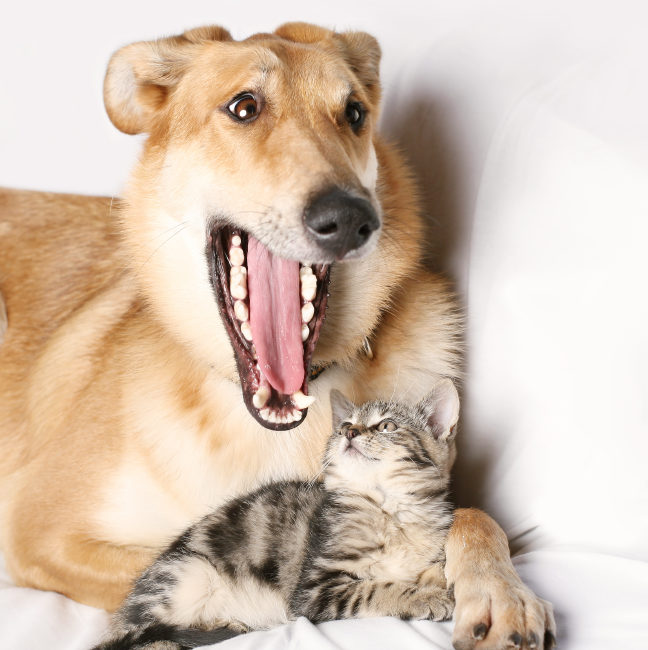Most people think that “doggy breath” is a normal part of being a pet. However, “doggy breath” or halitosis is usually a symptom of a potentially serious disease called periodontal disease.
According to The American Animal Hospital Association: “over 85% of dogs over 4 years of age have periodontal disease”
If teeth are not properly cleaned after eating, food particles and bacteria form plaque. If plaque is not brushed away, it leads to calcification of the plaque and formation of tartar. This tartar travels under the gums and leads to gingivitis resulting in bleeding, swelling and malodour.
The next stage in dental disease is periodontitis, in which the supporting tooth structures including the bone begin to be destroyed. Periodontitis will inevitably lead to problems such as halitosis, pain, loss of teeth, broken jaws, and problems with swallowing. Even more concerning, infection can enter the blood stream and lead to bacterial endocarditis, meningitis, osteomyelitis, liver disease and kidney disease, just to name a few.
There are 3 key things you can do to prevent periodontal disease and the resulting disease processes:
- Brush your pets teeth daily (According to the American Veterinary Dental Association, there is little or no benefit from brushing teeth less frequently than every other day)
- Tartar control Food (results in a significant reduction in plaque formation, particularly for molars which can be more difficult to brush)
- Professional Dental Cleaning by your veterinarian (similar to human dental cleaning by a dental hygienist, however dogs and cats require a general anesthetic for the procedure)
Following these guidelines will significantly improve your pet’s quality of life and longevity. If you have concerns or questions regarding your pet’s dental health, please book a complimentary appointment with one of our technicians.




